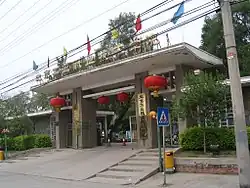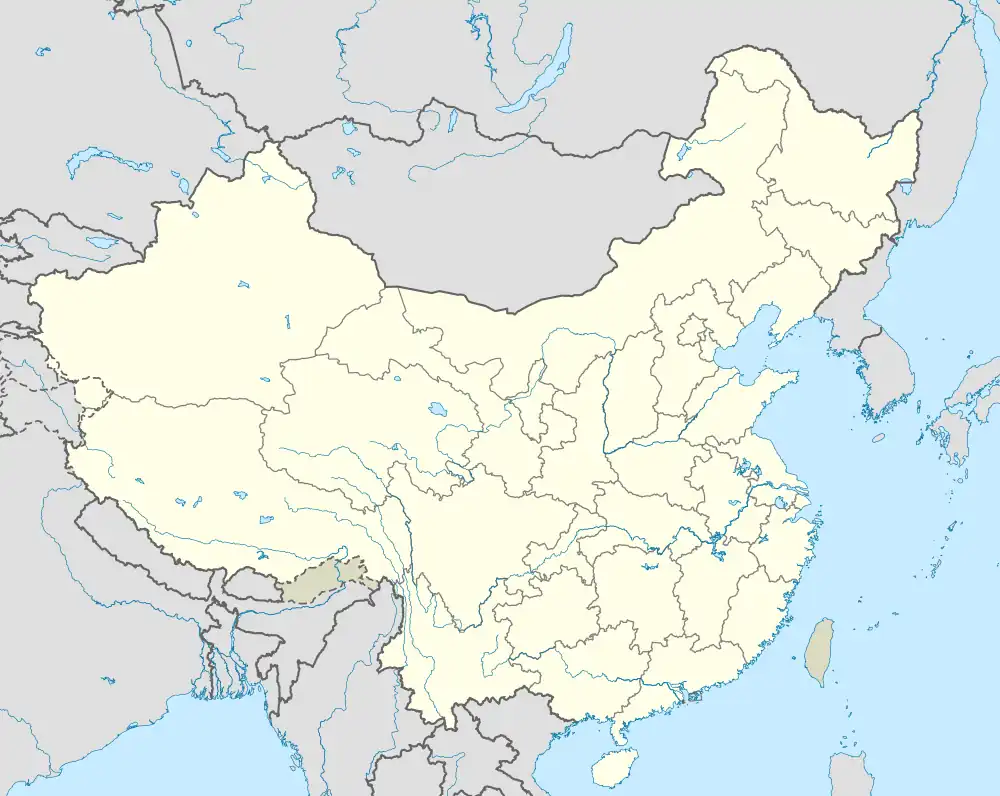Wulituo Subdistrict
五里坨街道 | |
|---|---|
 Beijing Career School of Industrial Techniques on the southwest of the subdistrict, 2008 | |
 Wulituo Subdistrict  Wulituo Subdistrict | |
| Coordinates: 39°57′17″N 116°07′12″E / 39.95472°N 116.12000°E | |
| Country | China |
| Municipality | Beijing |
| District | Shijingshan |
| Village-level Divisions | 15 communities |
| Area | |
| • Total | 24.46 km2 (9.44 sq mi) |
| Population (2020) | |
| • Total | 41,248 |
| • Density | 1,700/km2 (4,400/sq mi) |
| Time zone | UTC+8 (China Standard) |
| Postal code | 100042 |
| Area code | 010 |
Wulituo Subdistrict (Chinese: 五里坨街道; pinyin: Wǔlǐtuó Jiēdào) is a subdistrict situated on the northwestern part of Shijingshan District, Beijing, China. It shares border with Junzhuang Town and Xiangshan Subdistrict to the north, Pingguoyuan Subdistrict and Sijiqing Township to the east, Jinding Street and Guangning Subdistricts to the south, as well as Chengzi Subdistrict and Longquan Township to the west. Its population was 41,248 as of 2020.[1]
The subdistrict was first instituted in 1963, and was named after Wulituo (Chinese: 五里坨; lit. 'Five Miles Lump') village that used to exist within its border.[2]
Administrative Divisions
In 2021, Wulituo Subdistrict covered 15 communities within its borders, all of which are listed as follows:[3]
| Administrative Division Code | Subdisvision Names | Name Transliteration |
|---|---|---|
| 110107010001 | 陆军机关军营 | Lujun Jiguan Junying |
| 110107010003 | 黑石头 | Heishitou |
| 110107010004 | 西山机械厂 | Xishan Jixiechang |
| 110107010006 | 高井 | Gaojing |
| 110107010011 | 隆恩寺 | Long'ensi |
| 110107010013 | 东街 | Dongjie |
| 110107010015 | 红卫路 | Hongweilu |
| 110107010016 | 南宫 | Nangong |
| 110107010017 | 隆恩寺新区 | Long'ensi Xinqu |
| 110107010018 | 天翠阳光第一 | Tiancui Yangguang Diyi |
| 110107010019 | 天翠阳光第二 | Tiancui Yangguang Di'er |
| 110107010020 | 天翠阳光第三 | Tiancui Yangguang Disan |
| 110107010021 | 隆恩颐园 | Long'en Yiyuan |
| 110107010022 | 南宫嘉园 | Nangong Jiayuan |
| 110107010023 | 京西景园 | Jingxi Jingyuan |
See also
References
- ↑ "China: Bĕijīng Municipal Province". CityPopulation.de. Citing: China National Bureau of Statistics (web), Bureaus of Statistics in Beijing (web). Retrieved 30 September 2020.
- ↑ Zhong hua ren min gong he guo zheng qu da dian. Bei jing shi juan. Li li guo, Li wan jun, Wu shi min, 李立国., 李万钧., 吴世民. Bei jing: Zhong guo she hui chu ban she. 2013. ISBN 978-7-5087-4058-4. OCLC 910451741.
{{cite book}}: CS1 maint: others (link) - ↑ "2021年统计用区划代码和城乡划分代码". www.stats.gov.cn. Retrieved 2022-10-02.
This article is issued from Wikipedia. The text is licensed under Creative Commons - Attribution - Sharealike. Additional terms may apply for the media files.